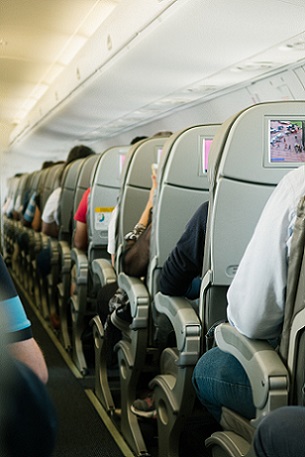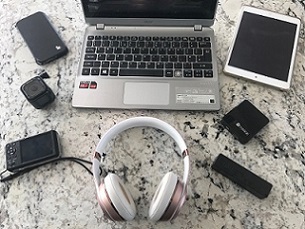 The confined space of a passenger aircraft is the last place you’d want a Lithium battery fire
The confined space of a passenger aircraft is the last place you’d want a Lithium battery fire
 A pilot holding an AvSax thermal containment bag
A pilot holding an AvSax thermal containment bag
 Passengers regularly take all these items onto passenger aircraft, including e-cigarettes
Passengers regularly take all these items onto passenger aircraft, including e-cigarettes
There have been 10 lithium battery fire incidents on board aircraft in just one month … including three on a single day.
The incidents happened in USA airspace or involved American passenger aircraft so there may have been many more worldwide.
The incidents are routinely revealed by the Federal Aviation Administration in the USA and showed the unusually high number between June 22, 2022 and July 22, 2022.
The good news is that all the airline companies involved – United Airlines, American Airlines, Horizon, Alaska and Mesa - now carry special lithium battery fire mitigation bags and on every occasion they were deployed to bring the emergency to a quick and safe end.
Six of the incidents involved vaping devices even though they weren’t being used at the time, two were overheating mobile phones while one involved a power bank and another a laptop.
There were three lithium battery emergencies on just one day, July 22, 2022.
Some of the devices went into thermal runaway which happens when one cell in a battery overheats it can produce enough heat – up to 900°C (1652°F) – to cause adjacent cells to overheat. This can cause a lithium battery fire to flare repeatedly and they are very difficult to put out which is why AvSax battery fire containment bags are needed.
Passengers bring hundreds of personal electronic devices on board each flight including e-cigarettes, iPads, cellphones, laptops and headphones so there is always a risk of a fire on board an aircraft which could emit toxic smoke and the device could even explode. The fires are often down to faulty batteries or if the devices have been powered up with cheap chargers that fail to meet safety standards.
Here’s the full list of incidents:
June 22: A passenger’s power bank went into thermal runaway on a flight from Newark to Barcelona. The portable charger was switched off but connected to a mobile phone when it began to burn and emit black smoke. It was put in a thermal containment bag (as with all the following cases) and given to Spanish authorities when the plane landed.
June 25: On a flight from Dallas to Philadelphia an e-cigarette stowed in a bag in an overhead locker started to emit smoke.
June 29: A laptop overheated on a flight from Denver to Wichita. It would not switch off so was put into a lithium battery thermal containment bag.
June 30: A passenger’s e-cigarette began to overheat and emit smoke on a plane heading to Birmingham, Alabama. The device had gone faulty and could not be switched off.
July 1: A passenger’s e-cigarette began to overheat in his pocket. The FAA hasn’t said where this plane was heading.
July 13: A passenger’s mobile phone overheated and began to smoke just as the plane was taxiing to the runway at Houston to fly to Monterrey in Mexico. The phone was put into a thermal containment bag and the plane returned to the departure gate.
July 18: A passenger’s e-cigarette began to overheat on a flight from Los Angeles to Boston.
July 22: A plane flying from San Francisco was descending into Las Vegas when a passenger’s e-cigarette overheated.
July 22: A passenger’s laptop began to overheat just before departure. The FAA has given no further details about the flight.
July 22: A passenger’s e-cigarette began to overheat in his pocket on a flight to Los Angeles.
The world’s best-selling fire containment bag for personal electronic devices on aircraft is the award-winning AvSax (www.avsax.com) which are now on more than 16,770 aircraft operated by more than 100 airline companies. They have been used 33 times to deal with emergencies since the start of 2017 and every time they have been deployed the aircraft has been able to complete its journey safely with no need to divert or make an emergency landing. Diversions can be very costly to the airline company and can even run into hundreds of thousands of dollars.
Many air ambulance helicopters in the UK now carry AvSax. More than 20 helicopters operated by specialist aerial emergency medical services company Babcock were equipped with AvSax following a detailed look into the possible risks posed by lithium-ion batteries on aircraft.
AvSax won the prestigious Queen’s Award for Enterprise in the UK in 2018, the highest award any business in the UK can get.